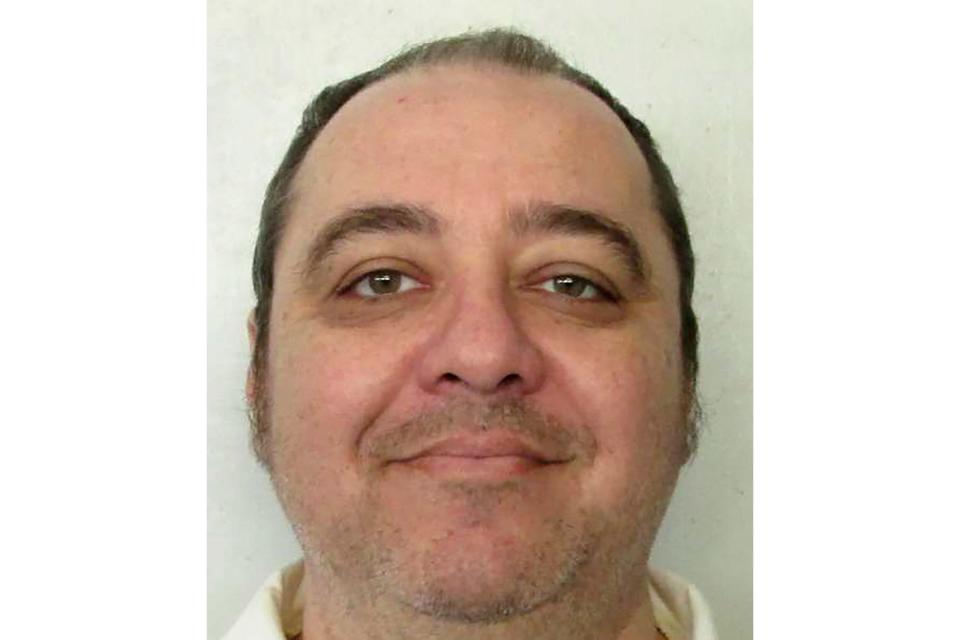`The world is watching': Supreme Court liberals criticize go-ahead for new execution method
WASHINGTON − The Supreme Court’s three liberal justices criticized Thursday the majority’s decision to allow the nation’s first execution of a death row inmate with nitrogen gas, saying Alabama’s Kenneth Eugene Smith should have had more time to pursue legal challenges about the controversial method.
“Having failed to kill Smith on its first attempt, Alabama has selected him as its `guinea pig’ to test a method of execution never attempted before,” Justice Sonia Sotomayor wrote in her dissent. “The world is watching.”
Justices Elena Kagan and Ketanji Brown Jackson also dissented, saying more needed to be known about the execution method. His lawyers argued nitrogen hypoxia as a form of execution could violate the constitutional ban on cruel and unusual punishment.
All three said they would have granted a stay of execution and heard Smith’s appeal. The court’s six conservative justices rejected both requests without comment.
Smith was pronounced dead at 8:25 p.m. at an Alabama prison.
The Supreme Court's decision paved the way for other states to potentially use the nitrogen method, described by Alabama officials as "swift, painless, and humane."
Sotomayer, however, used stark language to describe Smith's probable final moments.
"What Smith knows is that he will be strapped to a gurney. He will wear a nitrogen-supplying, off-the-rack mask for which the State has not fitted him or even tried on him," Sotomayer wrote. "Once the nitrogen is flowing into the mask, his executioners will not intervene and will not remove the mask, even if Smith vomits into it and chokes on his own vomit."
The state had said Smith could suffer pain if he vomits “exactly before he becomes unconscious and insensate,” but that scenario relies on a “cascade of unlikely events.”
It was the first new method of execution since lethal injection began in 1982. The Supreme Court has never found a method of execution to be unconstitutional.
Experts from the United Nations Human Rights Council warned nitrogen gas is an untested execution method that may cause “grave suffering” and likely violates the prohibition on torture.
But Alabama Attorney General Steve Marshall called nitrogen gas “perhaps the most humane method of execution ever devised.”
“Such treatment is much better than Smith gave Elizabeth Sennett nearly thirty-six years ago,” Marshall wrote in court filings about the woman Smith was convicted of stabbing to death.
Alabama planned to put a respirator-type face mask over Smith’s nose and mouth to replace breathable air with nitrogen, causing him to die from lack of oxygen. State officials had said he would become unconscious within seconds and die within minutes.
But if the mask is not tight enough, Smith’s attorneys had argued, oxygen can seep in. That could prolong the execution and leave him in a vegetative state instead of killing him.
Smith could also vomit instead the mask and choke to death, his lawyers said.
They argued Alabama should use a hood or closed chamber system to administer the nitrogen gas or should execute him by firing squad.
“When the state is considering using a novel form of execution that has never been attempted anywhere, the public has an interest in ensuring the state has researched the method adequately and established procedures to minimize the pain and suffering of the condemned person,” his lawyers told the Supreme Court.
Alabama officials said Smith's claims received a robust hearing in the lower courts and he failed to prove administering the nitrogen gas by mask is risky.
"No doubt if the State had adopted `a hood' instead of a mask, Smith would be telling the court that `a hood' threatens him and his dignity too," the state's attorneys wrote in a filing.
Dig deeper States can't figure out how to execute inmates. Alabama is trying something new.

Two other states – Mississippi and Oklahoma – have authorized nitrogen hypoxia as an execution method but have not used it so far.
Lethal injection is the most common execution method in the United States but the drugs have become increasingly difficult to find.
And when Alabama tried to execute Smith by lethal injection in 2022, workers couldn’t find a suitable vein. It was the third time the Alabama Department of Corrections had to halt an execution in progress for that reason.
Smith’s lawyers told the Supreme Court it would be cruel and unusual punishment to try to execute Smith again, because the first, “cruelly willful,” attempt by lethal injection failed.
Alabama officials pointed out that when Smith was trying to stop the 2022 lethal injection, he asked that nitrogen gas be used instead. At the time, Alabama hadn't yet developed a protocol for nitrogen gas.
Smith was one of two men convicted in the 1988 murder-for-hire slaying of Sennett in northwestern Alabama. Prosecutors say Smith was one of two men who were each paid $1,000 to kill Sennett on behalf of her pastor husband, who was deeply in debt and wanted to collect on insurance.
Her husband died by suicide a week later. The other man convicted in the slaying, John Forrest Parker, 42, was executed by lethal injection in June 2010.
Nitrogen hypoxia Why Alabama's execution of Kenneth Smith stirs ethical controversy.
Contributing: Associated Press, Kayla Jimenez and Marty Roney.
This article originally appeared on USA TODAY: Supreme Court liberals dissent on Alabama execution by nitrogen gas
